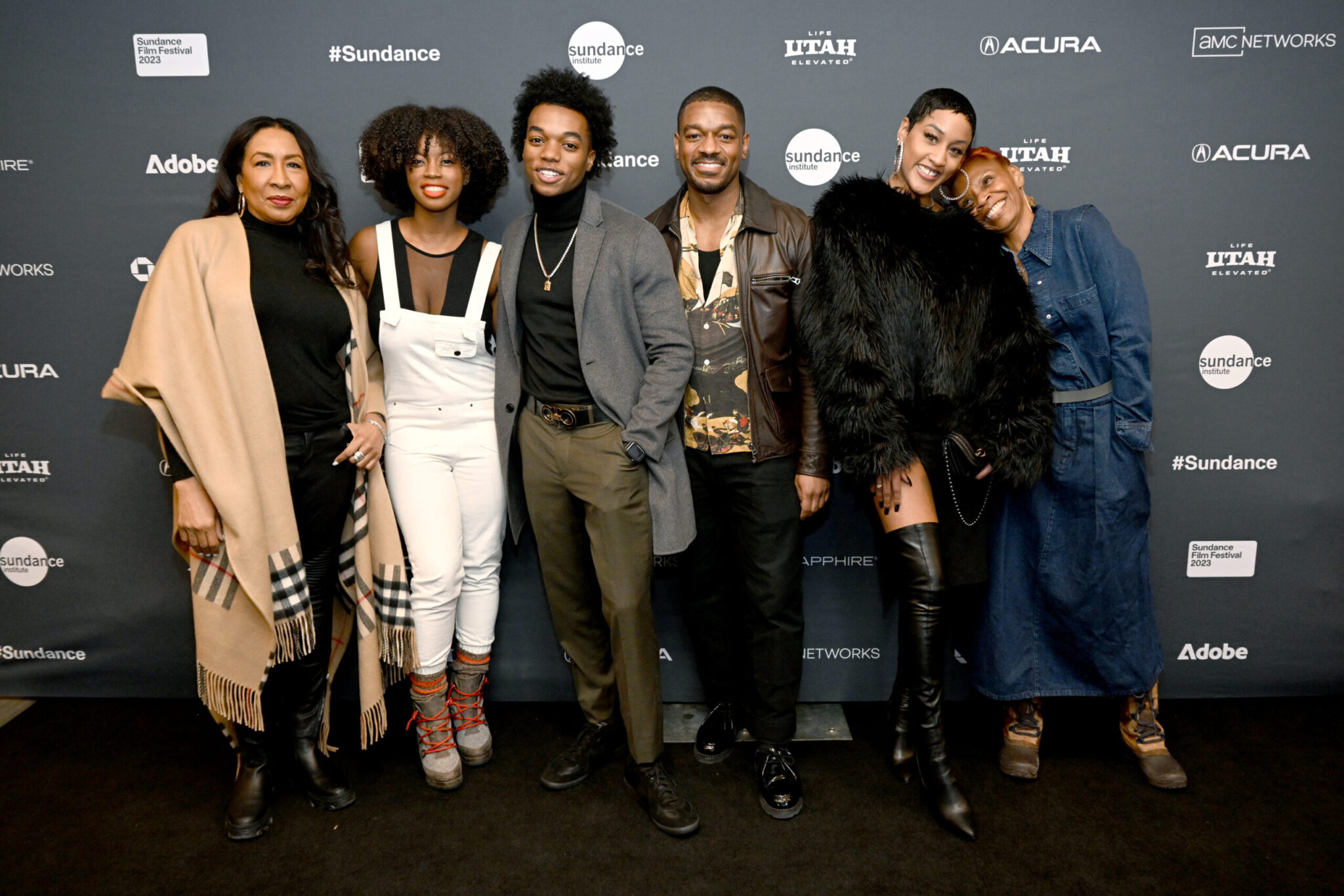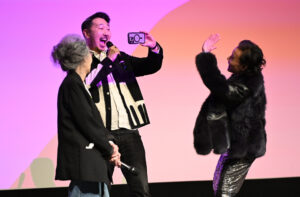(L-R) Karen Chilton, Reese Antoinette, Maliq Johnson, Parish Bradley, Shanice Marica and Simbi Kali of “Ricky” attend the 2023 Sundance Film Festival Short Film Program 1 at Prospector Square Theatre on January 19, 2023 in Park City, Utah. (Photo by Jim Bennett/Getty Images)
By Stephanie Ornelas
Six short film directors met Festivalogers at Prospector Square Theatre in Park City to talk about their films screening in the 2023 Sundance Film Festival’s shorts program. And what they may or may not not have realized is this: there’s so much ahead of them. Because it’s not uncommon for directors of short films to return to the Festival with a feature film.
During the program’s post-premiere Q&A, the directors shine a spotlight on the issues explored in each of their powerful films, and it seems like a big theme is reclamation. Taking back what’s rightfully ours can start with a conversation, and that’s what a lot of these films work to accomplish. Take a minute and explore the six captivating short films that screened in this year’s Short Film Program 1:
Help Me Understand — In Aemilia Scott’s 14-minute short, six women, brought together in an office room, are required to come to a consensus about what laundry detergent is superior, as part of the company’s latest brand vision. What starts out as a tense discussion between six completely different people turns into a therapeutic conversation about some of the toughest challenges many women face. During the post-premiere Q&A for Short Film Program 1, Scott explains how her time working as a videographer for focus groups really inspired her to create the short.
“I saw a ton of insane shit. I knew I wanted to do a story like this. You’re offered a few choices and everyone gets rallied around one, but no one really likes one. That’s capitalism, right? But what if it’s neither? I wanted to explore that. So that was one theme.”
Scott also explained how recent discussions surrounding reproductive rights also led her to create the short. “We’ve been talking about women’s bodies so much, politically, for the last six months to a year. What does that mean? Can I bring something into this that is a way to unite six women who have no other reason to agree with one another? Funny and sad was the theme.”
Parker — “I’ve known the Parker family patriarch for about 15 years. He’s been a housepainter for me, and everytime he painted a room, we got to talking,” says co-director Sharon Liese, as she talked about the family her 13-minute short is centered around. Her film follows three generations of a Kansas City family who are finally unified when they do something that countless other Black Americans once could not — choose their own last name.
“I couldn’t figure out the right story. Then Parker called my husband, who is a lawyer, and asked about the process for the name change. And I said, ‘That’s it. That’s the story.”

Co-director Catherine Hoffman explains other themes explored throughout the film, such as Black joy. “They’re a loving, joyful family,” she says of the Parkers, who happened to be present in the theater that night. “We have two generations of really loving, present Black fathers, and we don’t get to see that on screen often. The film also portrays Black joy, also something we don’t get to see on screen.”
Sweatshop Girl — Director Selma Cervantes drew a lot of her inspiration for Sweatshop Girl during the pandemic. “I was just buying a handmade mask, and that was the first time I questioned: ‘This product that is supposed to be saving so many of our lives, it’s also damaging other people’s lives. So that was my first question.”
In Cervantes’ 16-minute short, Inés works as a seamstress in a sweatshop where pregnancy tests are periodically administered. When she becomes pregnant, she is sure that she will get fired, so she does everything she can to keep it a secret.
“I tried to do as much research as I could,” explains Cervantes. “I understood that I was not a part of that atmosphere. I wanted to find someone I could relate to: a woman with no control over body.”
Sunflower Siege Engine — “This summer I was doing some work around the Native American Graves Protection and Repatriation Act, which was established in 1990, which basically requires museums and institutions in the U.S. to return human remains back to the tribes from which they were stolen. But it’s been a hard road for the last thirty years,” explains director Sky Hopinka as he talks about his thought process surrounding the project.
In his 13-minute short film, movements of resistance are collapsed and woven together, from reflections of one’s own body in the world today to documentation of Alcatraz, the reclamation of Cahokia, and the repatriation of the ancestors.
“Often institutions will side-step it by saying there’s no historical record, and a historical record, to them, is a white person writing about them. So, if there’s a Jesuit Tribe in 1630 that they didn’t write about 2,000 years ago, then there’s no record. So it’s that sort of slimness where there’s nothing that can be returned, or it’s hard getting these remains back to them in a ceremonial way. That was kind of the foundation of the project.”

Inglorious Liaisons — Chloé Alliez and Violette Delvoye were not present to speak about their 11-minute short that follows a group of friends who attend a party together, but their colorful short is comical and relatable. The film explores all the common fears and temptations adolescents face when they enter the high-school party scene: teen crushes, alcohol consumption, and fitting in.
Ricky — Rashad Frett wanted to create his short after seeing many of his friends go through what Ricky goes through in his 20-minute short. In the film, Ricky is an ex-offender who is struggling with new freedom and pursues redemption at all costs.
“I’ve seen a lot of my peers go through the criminal justice system. They had a hard time readjusting and even having conversations. Their criminal records were hanging over their heads, and they were having a hard time finding jobs, so they would end up going back to their old ways. This is shining a light on that and using that to start conversation.”







